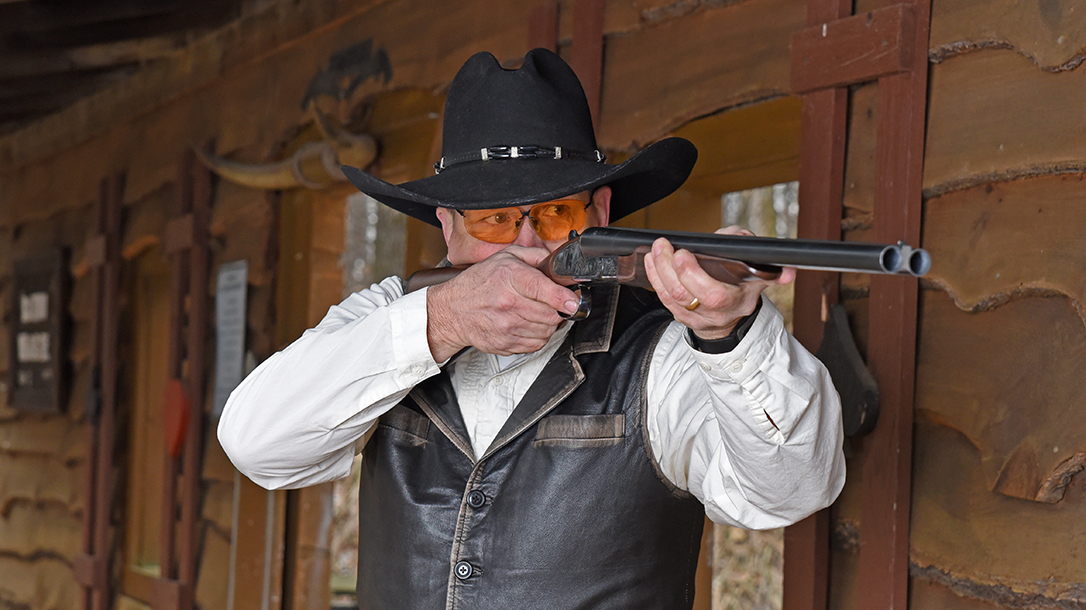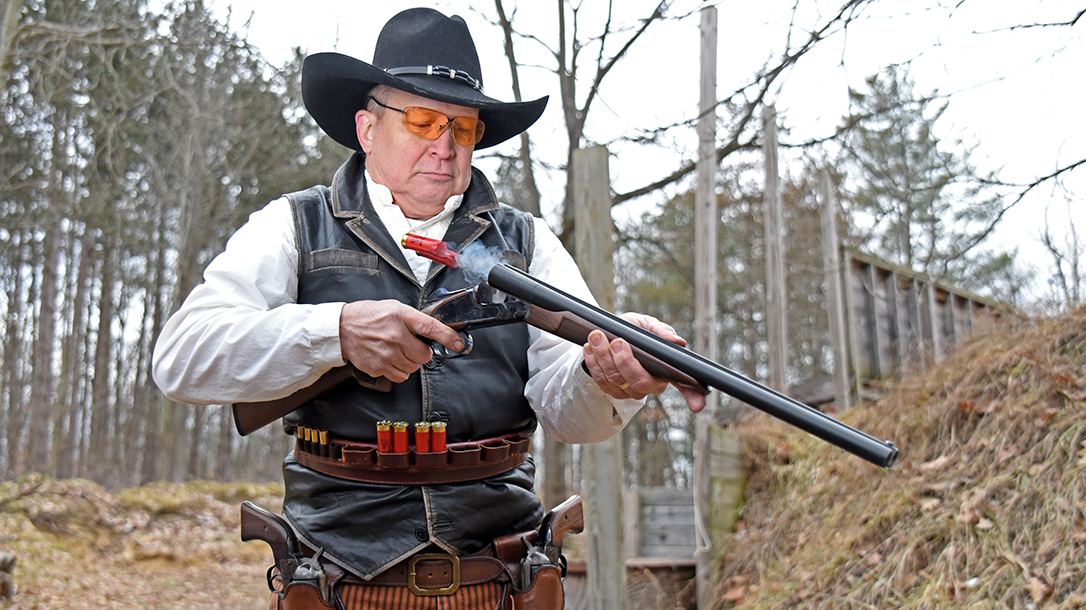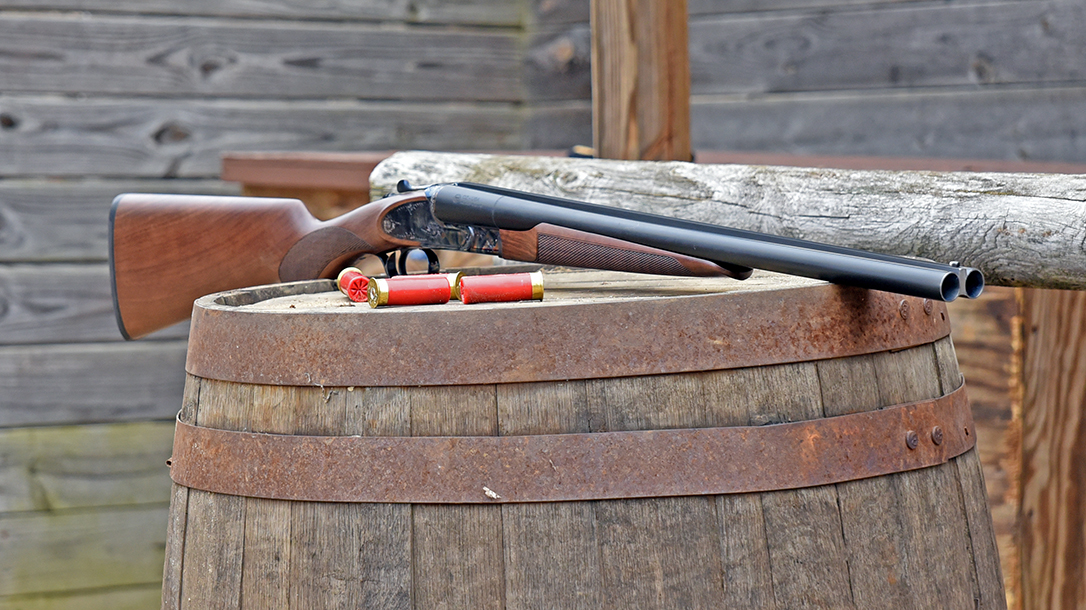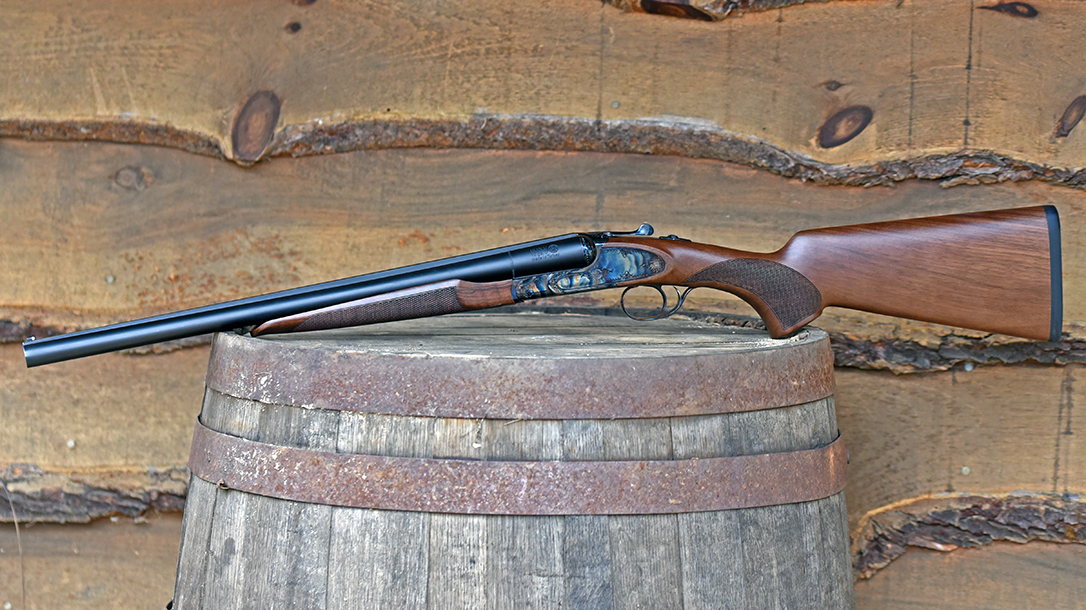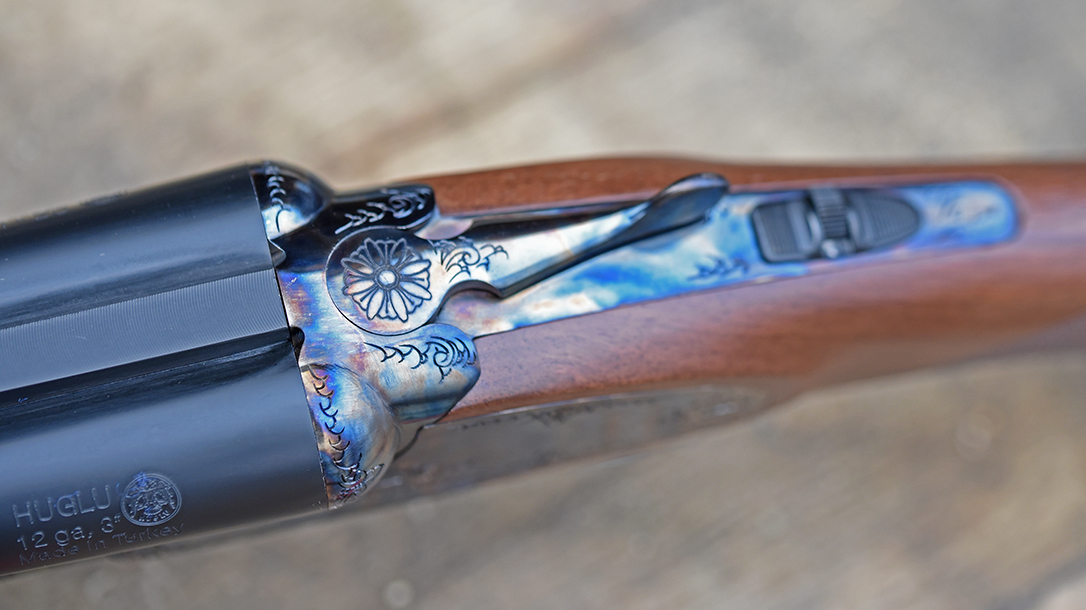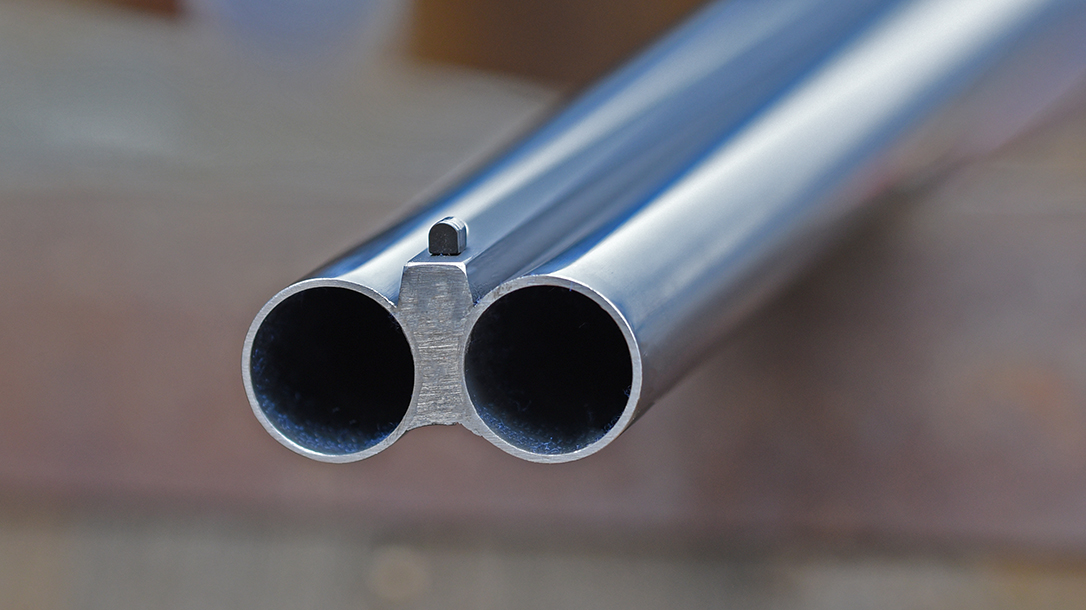December 28, 1861: The war to quickly send those damned Yankees home was beginning to show signs of becoming a longer struggle. Outside one small town in Kentucky, 500 Union soldiers had been watering during a break between battles. Their commander, Major Eli Murray, a Kentucky native himself, had no way of knowing that somewhere between 200 and 300 Confederate cavalrymen under the famed Colonel Nathan Bedford Forrest were assembling nearby for a raid. Forrest had been on the move to support other forces elsewhere inside Kentucky when he was advised near Sacramento by a Confederate sympathizer named Mollie Morehead that there were Union troops in the area.
With lingering thoughts of Christmas, home and family as they went about their routine chores, the Yanks were caught by surprise when Forrest mounted his attack. In Forrest’s first major cavalry victory, he divided his men into three groups. One dismounted to attack from the cover of nearby trees, while the other two held their saddles, ready to outflank the Union position on both sides once the fray heated up. Displaying the character that made him famous as a daring tactician and fearless fighter, Forrest fired the first shot and led the charge himself.
Advertisement — Continue Reading Below
On the Battlefield
One Confederate private, Adam Johnson, later wrote, “Led by this impetuous chieftain, we swooped down upon our foes with such terrific yells and sturdy blows as might have them believe a whole army was on them; and turning tail, they fled in the wildest terror, a panic stricken mass of men and horses…cutting and shooting right and left, and Forrest himself in his fury ignoring all command and always in the thickest of the melee.”
Another eyewitness, Confederate Private James Hammer, credited Forrest with personally killing nine of the enemy despite having his horse shot out from under him and suffering a dislocated shoulder.
Armed almost entirely with swords and their favorite long arm of choice, Forrest’s cavalry let off a near-simultaneous shotgun blast at short range that tore holes in the Yankees’ hastily formed skirmish lines. One account has each shotgun barrel loaded with 15 to 20 buckshot pellets; the ferocity and combined effect of those Confederate scatterguns completely routed the Union forces, in spite of the Union men outnumbering the Rebs two to one. The victory was clearly and decisively Confederate.
Advertisement — Continue Reading Below
Both leaders survived that short but fierce battle. Colonel Forrest carried his tactics, courage and leadership into the history books as one of the South’s finest and most capable field officers, and Major Murray rose through the ranks during the war, eventually serving as a U.S. marshal for Kentucky for 10 years and governor of the Utah Territory in 1880. The shotgun continued to serve Confederate cavalry units well until the end of the bloodiest war in U.S. history.
The Coach Gun
Cavalry units favored the shotgun for several reasons. Buckshot proved a devastating close-in fight-stopper perfectly suited to the dash-and-dodge engagement style of mounted soldiers. A short-barreled shotgun was easier to reload and maneuver on a terrified horse in the thick of fighting than a typical infantry rifle. Plus it offered two shots before a cavalryman had to reload. Depending on the number of pellets loaded into each barrel and the distance to the enemy, a single shotgun blast might easily spread enough to take out more than one enemy soldier, and with two barrels as a force multiplier, a small band on swift horses using the right tactics could deal very effectively with a larger enemy force armed only with single-shot rifles.
While cut-back shotguns long preceded the Civil War, with roots dating back to Europe in the early 1700s, the term “coach gun” didn’t really catch on here in the U.S. until relatively recently. The same inherent close-range firepower and quick handling that made the short scatterguns so effective in cavalry hands translated quite well to civilian use and the newfangled self-contained shotgun shells after the Civil War. And when Wells, Fargo & Company began issuing shotguns to its messengers to guard shipments on stagecoaches, a legendary piece of Old West history was created.
Advertisement — Continue Reading Below
Shotgun Messenger
While the correct name was initially “shotgun messenger,” and the term “riding shotgun” didn’t come into use until about 1919, what we call a coach gun today spread widely wherever a short and handy buckshot blaster was needed, either professionally or privately. Doc Holliday used a 10-gauge coach gun to kill Tom McLaury at such point-blank proximity during the fracas at the O.K. Corral that the town’s undertaker covered the pellet spread in McLaury’s chest with one hand. Wyatt Earp also favored a 10-gauge coach gun when he killed Frank Stilwell in a Tucson railyard, and again to kill “Curly Bill” Brocius the following year at the Iron Springs shootout.
Coach guns of the late 1800s had external hammers and were typically Colts, Remingtons, Parkers, Smiths and Ithacas if domestic, with Belgium well represented from abroad. Barrels ran anywhere from the more common 18 to 24 inches to the occasional truly sawed-off shotguns in the 12- to 14-inch range. The 12 gauge was the most common, but the 10 had its following, as the Earp faction showed. Today, there are several makers of modern coach guns that cover the gamut from entry level to deluxe, with or without hammers. The classic American names no longer offer coach guns, sadly, and a good-quality, U.S.-made side-by-side in general is an uncommon critter. But foreign coach guns fill the void quite well, and one of the best of the bunch for my money is CZ’s new Sharp-Tail.
One Sharp Shooter
While CZ-USA has been marketing a line of doubles in the U.S. made by Huğlu in Turkey for several years, it took a while for the company to bring out a hammerless model. If you’re not emotionally chained to the classic external-hammer profile and double triggers, this one’s worth the wait.
Advertisement — Continue Reading Below
Sleek and slim in either its 12- or 20-gauge configurations, the new Sharp-Tail Coach sports 20-inch, cylinder-bore barrels under a raised solid center rib and ahead of a very strong monobloc receiver. Besides being a very practical design with a single mechanical trigger, this coach gun is also very handsome. CZ’s obviously going more uptown here. The barrels wear a matte black hard chrome finish for wear and corrosion resistance while the receiver, triggerguard, latch lever and sideplates are all brightly polished and casehardened, with basic laser engraving enhancing the colors in appropriate spots.
CZ Sharp-Tail Coach Features
Based on an Anson & Deeley boxlock action, the new Sharp-Tail’s non-automatic tang safety slides forward for “fire” and back for “safe,” with the first-shot barrel selector positioned in that safety. Click it left for the trigger to fire the left barrel first, right for the right barrel, etc. The single mechanical trigger switches automatically to the other barrel after it’s pulled once, regardless of whether that first shell fired or not. The front end carries a big and bold white bead, and the high rib is lightly cross-hatched along its full length to eliminate any glare. The Turkish walnut forend and stock are cleanly laser-checkered in a flat diamond pattern, the wrist is a pistol-grip style, and the back end wears a thin, solid black rubber recoil pad with a hard rubber heel at the top.
The overall package may not be strictly traditional 1800s in form, but being thoroughly modern in function isn’t a bad thing, and this is a quality alternative in a short and light configuration that fills the same function as a classic coach gun. It just goes about it a little differently.
Advertisement — Continue Reading Below
Making Thunder
While I think this new Sharp-Tail would be right at home at a CAS match, knocking down steel with the best of them, every single one of the shotguns I own is primarily a defensive gun, and that includes the coach guns. Considering, however, that one of the shotgun’s greatest attributes is its versatility, I ran several loads through the new CZ to check its patterning, regulation and recoil, including Winchester’s No. 8 shotshells and Rack Master slugs as well as Federal’s nine-pellet 00 buckshot and No. 8 shotshells.
I fired the Federal 00 buckshot and Winchester slugs off a bench at 25 yards. With the former, the right barrel created a 5.88-inch pattern for nine pellets, slightly right of the point of aim, while the left barrel’s was 6.44 inches and slightly left of the point of aim. The elevation was dead on for both barrels, all of the pellets were in the kill zone, and the slight variance in windage could easily have been my fault.
CZ Sharp-Tail Coach Power
The Winchester slugs rocked the light coach gun. I’m not unduly recoil sensitive, but I only ended up firing one aimed shot through each barrel as a general indicator of where slugs would end up at that measured distance. Again, the right barrel hit slightly right, the left barrel slightly left, with 7.5 inches separating the holes. We don’t expect perfect barrel regulation in a $900 shotgun, and this isn’t bad for defense inside 25 yards, but it does illustrate the need to keep slugs close.
Advertisement — Continue Reading Below
I fired the Federal and Winchester No. 8 loads at 10 yards, again as general indicators. Both were light on recoil, though the Winchester ammo was lighter. The Federal game load created a 16-inch pattern through the right barrel and a 17.5-inch pattern through the left. Both barrels centered around the point of aim, with 80-percent density in 12 inches. The Winchester target load showed a vertical oval at 20 inches tall by 17 wide for the right barrel, and 18 inches tall by 15 inches wide through the left barrel, with an 80-percent density in 14 inches for the right barrel and 80 percent in 13 inches through the left. The Winchester shot tended to rise slightly above point of aim.
The Verdict
Whether you use this coach gun for weekend matches, rabbit control or home defense, the Sharp-Tail Coach covers a wide market. The walnut on the test sample was nicely grained and well-fitted to the action, running just slightly proud of the steel where they mated, with no gaps around the sideplates or tangs, and the wide forend does a good job of protecting your hand from hot barrels. The recoil pad lacked thickness, but mates to the stock well.
Advertisement — Continue Reading Below
One of the Sharp-Tail’s biggest draws for me is the trigger. The mechanical single trigger automatically switches sides after the first pull. This ensures getting off a shot, even when encountering a misfire. You can’t fire both barrels at the same time like you can with a double-trigger scattergun, but few of us consider that any real downside. And you don’t need to be fumble one finger around between triggers, or use two fingers to cover both triggers, which has always been awkward for me. I also really like the manual safety. I prefer to be the one who decides where, when and how to use it, not the gun.
All in all, this Sharp-Tail variant is a prime entry in the world of modern-day coach guns, and a high-quality double you’ll enjoy for years.
For more information, visit cz-usa.com.
Advertisement — Continue Reading Below
CZ Sharp-Tail Coach Specifications
- Gauge: 12; 3-inch chambers
- Barrels: 20 inches
- Overall Length: 37.5 inches
- Overall Weight: 6.7 pounds (empty)
- Stock: Walnut
- Sights: White bead
- Action: Break
- Finish: Casehardened, black hard chrome
- Overall Capacity: 2
- MSRP: $1,006
This article is from the Summer 2019 issue of Guns of the Old West magazine. Grab your copy at OutdoorGroupStore.com. For digital editions, visit Amazon.
